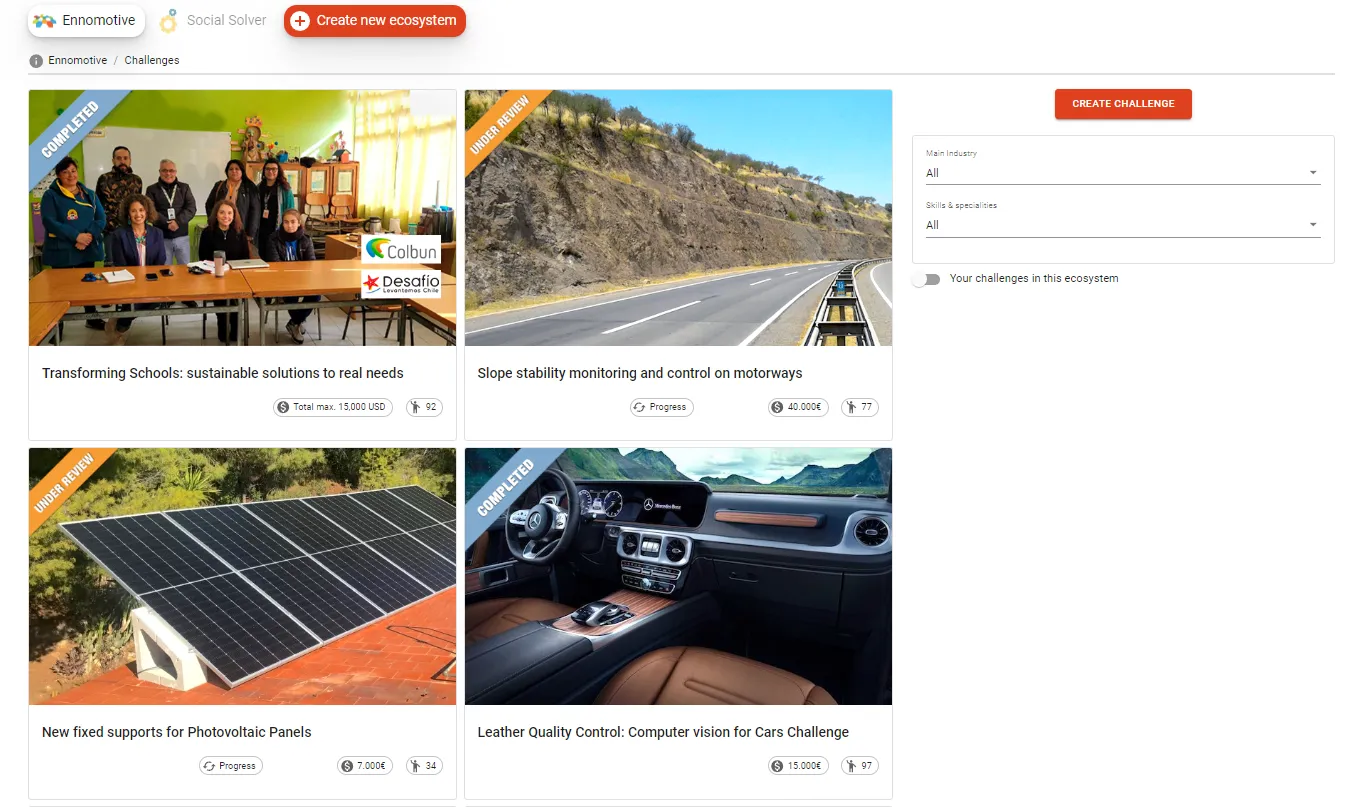Background
Our client, a leading company in raw materials extraction, storage and production of derivatives, is seeking to reduce its environmental impact in mining sites by repurposing the materials found in tailings, in a effort to contribute to the circular economy.
Circular economy considers waste as the source of new opportunities to repurpose materials that could be commercialized and have a valuable impact in other fields such as medicine, building materials, road construction, etc.
The challenge
During mining operations, metallic ores and other inert materials (1) are extracted from the ground and are usually stored in the surroundings of the mine. Those associated materials are disposed of, which creates a negative environmental impact while losing all their potential capabilities to be processed and produce valuable products.
These waste materials (tailings) have different granulometry and are mainly composed of silica, but also smaller amounts of other materials. In annex 1 you can see the specifications of materials object of this challenge.
Different potential uses for these materials have been identified, like the glass industry, where the composition and price varies if the waste is used to make flat glass products, bottles or others. The price is more expensive and the composition more restrictive in the first case.
However, the materials current status is not suitable for sales, it is necessary to previously treat them at a reasonable cost.
What the client is looking for
The main goal of this challenge is to find out whether or not there is a way to turn this waste into a raw material to be used in the glass industry.
To this end, it is necessary to develop a tailing-purification process that generates a new composition with the following characteristics:
- The highest quality quartz glass (SiO2) as the final product (97%-99% purity)
- Fe and Cr oxides must remain below 0.1%. .
- Limit the maximum amount of other materials below 1%
However, this is a general approach for one of the potential products.
The new purification process must be designed to start either right after the current tailing-generation process ends (see annex 2), that is the both process can work in series, or using some parts of the process or equipment.
The secondary goal of this challenge is to obtain a valuable by-product like aluminum, siderite...
This challenge focuses on the process to obtain the new product:
- Innovative or disruptive solution: the technology/equipment can already exist in other field or be completely new and innovative.
- Cost efficient: solutions should include a technical and economical analysis. The required investment (CAPEX) should be reduced even if the operational costs increase (OPEX), as long as the proposal generates benefits.
- Safe: Preferably to use non-toxic products / consumables.
All the above conditions shall be met in a proposed solution of the challenge.
See Annex 1 for the tailings composition.
See Annex 2 for current process specification
Evaluation Criteria
The solutions will be evaluated according to these criteria in the following order:
- Technical feasibility.
- The Best Business Case:
- First objetive: Lowest initial investment (CAPEX)
- Second objetive: Lowest operational cost (OPEX)
- The safest and lowest environmental impact
Deliverables
This is a 2-round tournament with the following submissions:
First round
A PDF document including:
- Brief description of the proposed solution, including a brief specification about the equipment, materials, operational regime...
- Diagram of the new process, pictures of the machines.
- List of new machines (main costs) with approximate cost and electric power
- Feasibility evidence of the solution.
- Business case (approximate, including main costs).
We are kindly asking you to submit your solution description with a bit of structure (avoiding long texts), including index and lists. Support your solution with images and outlines or diagrams. Generally, this will help us understand the solution better, rather than long texts.
Second round
A PDF document including:
- Detailed design of the process, including the specification of the required equipment and materials, the building layout of the solution.
- Required calculations (mechanical, electrical, flow calculations...)
- Detailed business case (including approximate operational costs)
Timeline
1st round – 6 weeks + 3 week for evaluation
2nd round – 4 weeks + 3 week for evaluation



